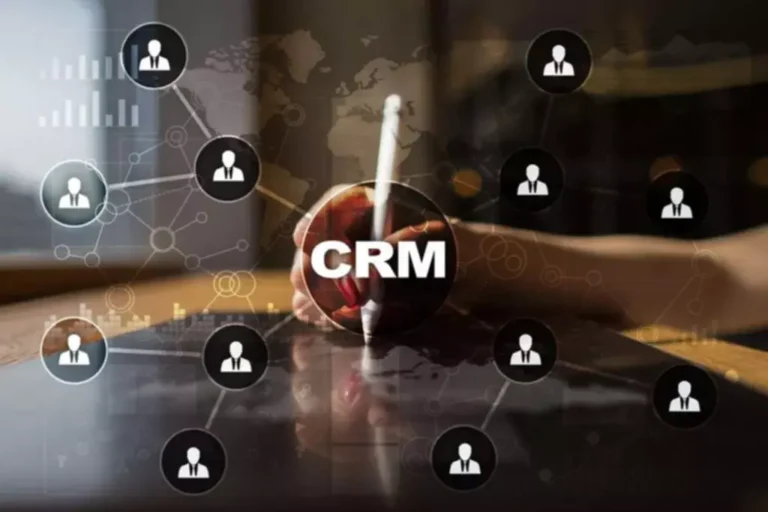Run your container, application code, batch job or operate on a completely managed container runtime with IBM Cloud Code Engine. PaaS growth and progress are additionally being driven by cloud migration and cloud-first or cloud-native software growth efforts in concert with different rising cloud technologies, similar to IoT. Control of PaaS is usually a matter of perspective and is often a shared duty between suppliers and customers. Combining private and non-private PaaS, hybrid PaaS affords corporations the flexibleness of infinite capability provided by a public PaaS with the fee saas vs paas vs iaas efficiencies and management of owning an internal infrastructure in private PaaS. The key difference is that SaaS offers a finished workload, while PaaS provides the instruments needed to assist a enterprise create and handle its personal workload. PaaS should be capable of handle the expansion of your software, both by method of performance and efficiency.
What’s Included In A Platform As A Service?

The supplier can also be responsible for the solution’s maintenance, updates and security. PaaS, IaaS and SaaS are integral to at present’s multicloud environments—the use of cloud services from a couple of cloud vendor. Multicloud offers organizations the flexibleness to optimize efficiency, management value and keep away from vendor lock-in. In the enterprise, multicloud usually refers to running enterprise purposes on PaaS or IaaS from a quantity of cloud service providers.

Examples Of Platform As A Service
Like with IaaS, PaaS migrations require plenty of work that always takes years to complete. Working along with your core group, you’ll want to determine which purposes you need to migrate to your PaaS occasion, the types of knowledge you want to migrate (and how to take action safely), and the way best to migrate in phases. Ready-made PaaS can cut working time and time to market, because it considerably reduces coding time and permits multiple customers to work on the same project at the identical time, without worrying about versioning. See how PaaS provides excessive ranges of flexibility and agility to cut down work time and time to market. Platform-as-a-Service (PaaS) is a technique of supply by which an organization’s builders can access software program and instruments by way of the net rather than on-premises.

Fewer Hardware Management Responsibilities
For enterprises, one of the most essential production workload requirements is predictable and constant performance to ensure business continuity. PaaS additionally gets your group out of datacenter operations and upgrades and places it back the place it belongs — delivering business worth. We are committed to serving to you maximize your know-how investment so you’ll have the ability to finest serve your customers. Red Hat OpenShift’s PaaS offerings embrace Red Hat OpenShift Service on AWS, Microsoft Azure Red Hat OpenShift, and Red Hat OpenShift Dedicated. Live-chat with our sales team or get in touch with a business growth skilled in your area.
What’s The Distinction Between Paas And Saas?
Security-as-a-Service (SECaaS) refers to a subscription model organizations use to outsource their security. It supplies customers with instruments corresponding to data protection, database security, Voice over Internet Protocol (VoIP) security, and general community safety to struggle threats. Perhaps probably the most utilized of the three, Software-as-a-Service (SaaS) is a cloud service model in which an organization delivers its software to users by way of the web. The consumer does not have to download, handle, or maintain updating software locally in a tough drive to be able to use it.
Considerations When Choosing A Paas Solution
- In addition, it integrates cutting-edge technologies, various platforms, frameworks, databases, and APIs that help builders implement a variety of applications and services.
- PaaS supplies any and all working systems that builders must work on, with out the developer needing to fret about utilizing the latest version or updating it for security patches.
- As an instance, IDC predicted that the cloud and PaaS market ought to see a compound annual growth fee of 28.8 p.c in 2021 via 2025.
This kind of service normally works using a public cloud system, which signifies that all the IT assets and cloud applications obtainable to customers are made accessible by way of the community. Users choose the software program, utility or cloud platform they want, and pay for the licence(s). It is as much as the cloud provider to manage the physical machines that provide access to its tools.
PaaS providers handle all of the licenses for all of the tools needed, releasing up the event team from this administrative burden. Development teams can do more with much less with the additional companies supplied by PaaS. For instance, a team might not need to hire an extra tester as a end result of PaaS includes a debugging device.
PaaS platforms often embody features like stream processing, machine learning capabilities, and visualization tools, enabling companies to create subtle IoT purposes. Startups and innovation teams can leverage PaaS to rapidly build and deploy minimal viable products (MVPs) without the overhead of managing complex infrastructure. The pre-configured environments and built-in development instruments allow builders to focus on core performance, reducing the time from idea to working prototype. This is particularly helpful in competitive markets the place being first could make a significant distinction. With PaaS, users not need to manage the working system, runtime, or different infrastructural components of their application that they would want to manage with IaaS. PaaS provides a completely managed answer for builders looking to launch purposes shortly.
Hybrid PaaS is often a deployment consisting of a combination of public and private deployments. Any PaaS offering essentially contains the IaaS resources required to host it, even if these assets aren’t discretely damaged out or known as IaaS. But PaaS is a major paradigm shift for numerous organizations in search of to enhance their productivity and shed native infrastructure.
This is why PaaS choices are often labeled “opinionated,” as they provide developers with a clearly defined, if considerably restricted, technique for constructing and operating purposes. The capacity to be flexible and agile amid a rapidly altering surroundings could make or break a enterprise. PaaS additionally offers excessive ranges of customization and adaptability, so it could be a fantastic launching level for your business. It’s easy to scale as needed and you can easily migrate to hybrid cloud environments or to other cloud fashions. Even if a improvement group is pleased with its PaaS provider, any modifications could have an effect on an software. For example, changes in infrastructure, similar to server availability, may impact the performance of the application.
PaaS suppliers ship a limited vary of instruments and companies, which might restrict builders from customizing infrastructure according to their specific requirements. The PaaS infrastructure is scalable on demand, making it simple to scale up functions primarily based on user requirements. It supports horizontal and vertical scaling, routinely provisioning and releasing resources as needed.
PaaS may additionally be used to reduce an utility’s time to market by automating or completely eliminating housekeeping and maintenance duties. Additionally, PaaS can lower infrastructure management by serving to to scale back the burden of managing scalable infrastructure. PaaS removes the complexities of load balancing, scaling and distributing new dependent companies. Instead of the developers controlling these tasks, the PaaS suppliers take responsibility. PaaS can present utility lifecycle administration features, in addition to particular features to fit a company’s product improvement methodologies. The mannequin additionally permits DevOps groups to insert cloud-based continuous integration instruments that add updates without producing downtime.
Enterprises that choose IaaS don’t need to buy any additional hardware or equipment. Everything is delivered nearly via the cloud, and there is nothing physical to maintain. Your PaaS service supplier ensures you might have the cloud computing resources you want to do your work, and also you, as the customer, are liable for managing your data and functions.
